An exciting, truly communicative Spanish program that follows a project-based, content-focused approach

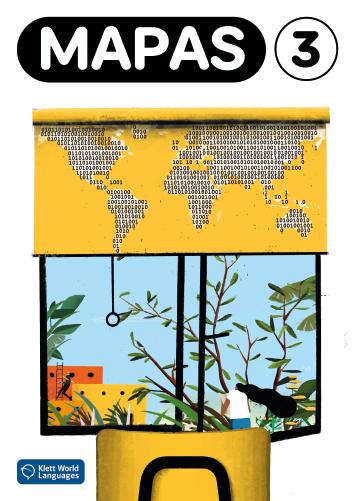



An exciting, truly communicative Spanish program that follows a project-based, content-focused approach




KLETT WORLD LANGUAGES is a publishing house specializing in print and digital instructional materials for learning and teaching world languages.
Our mission is to help students become global citizens by developing their intercultural and critical thinking skills through language learning. We aim to help students learn and use language in real-life situations by creating engaging and meaningful content that sparks their curiosity and motivates them to learn.
We strongly believe that teachers play a key role in language learning, and part of our mission is to support them and to provide ample opportunity for professional development.
Having them is not enough. We live by them.
Because everyone on the core KWL team has a background in education and works closely with educators and students, our commitment goes far beyond our daily work. We understand the needs of educators and students and we are passionate about looking for solutions and tools to help them succeed.
We are committed to providing high-quality print and digital content at affordable prices to all who want to learn a language. We guarantee lower prices for high-quality content and simple, easy-to-use technology.
We view languages as tools for communication and action. To learn a language and build authentic communicative competency, students need a realistic context, a true need to communicate, a focus on meaning, and the right linguistic resources. That is what we provide in our educational materials.
Our educational materials focus on the most current pedagogical methodology. They follow the ACTFL Guidelines for Proficiency, include Can-Do statements, and address the 5 Cs. Our digital resources provide original and authentic content via a simple and easy-to-use platform.
We see educators as our partners, and the core of our mission is to support them by providing professional development opportunities, highquality documents and activities, and instructor resources in an easily accessible format.
Our content is created to help students use language to communicate and interact with other communities and cultures both in the United States and abroad. Our books present a respectful, modern, and open-minded perspective of our world and its cultures that allows students to dismantle stereotypes and to cultivate an awareness of global concerns.
MAPAS is a four-level program designed for North American high school students learning Spanish at the introductory level. Its innovative design follows a project-based and contentfocused approach. Its main goal is for students to build knowledge through explorative and expansive learning. The Spanish classroom becomes a space where students develop 21st-century skills, such as collaboration, creativity, critical thinking, and communication.
MAPAS is...
A student-centered, 21st century, comprehensive language and culture program
A communicative program where real world language and projects take center stage
A fun, meaningful, and motivating approach to the Spanish language
A gateway to culture and language throught authentic materials
An invaluable tool for differentiation and accessibility
A program striving to make learning engaging, relevant, and impactful
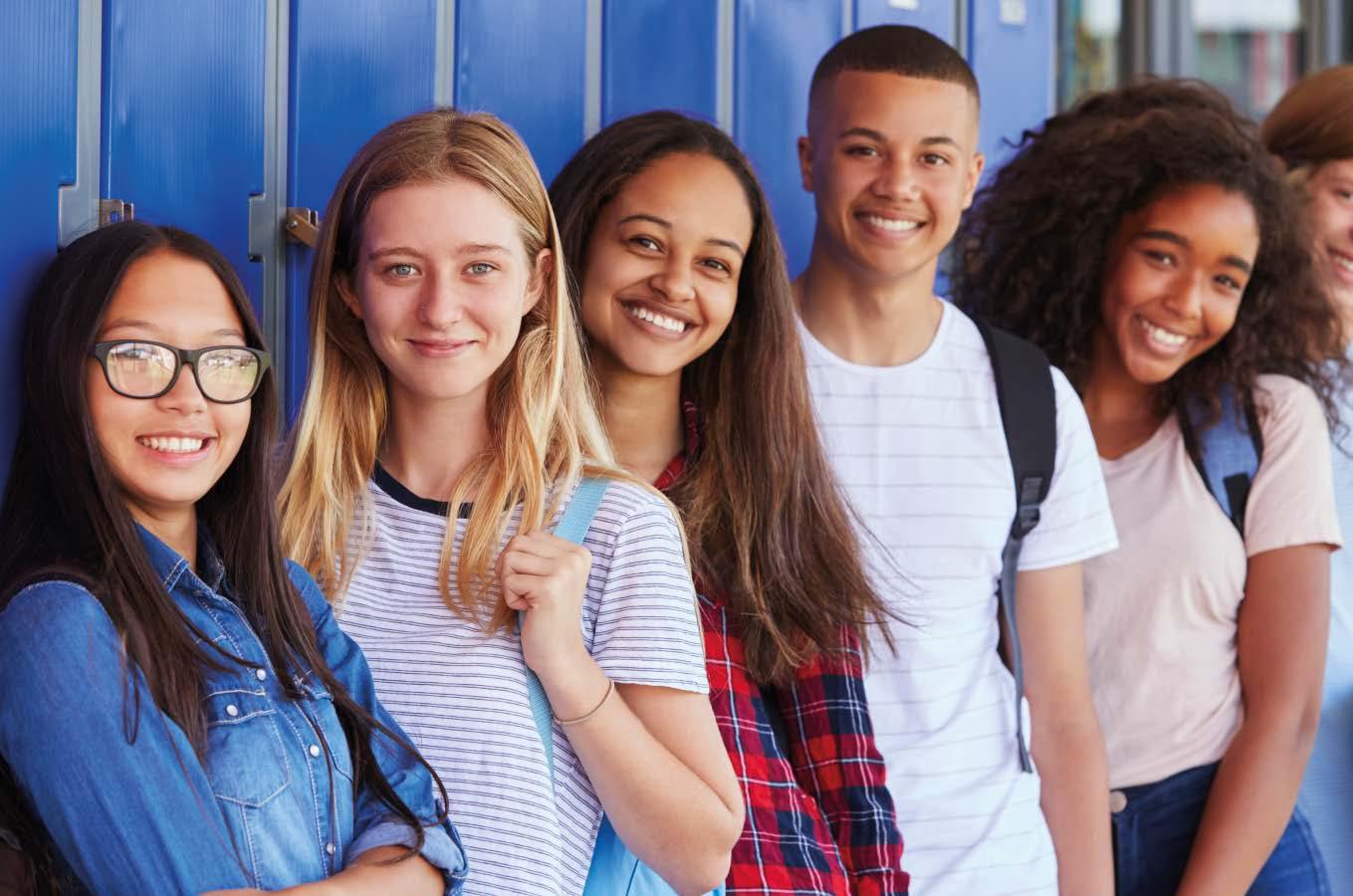
ACTFL World Readiness Standards and a proficiency-based aproach lie at the heart of MAPAS:
Learning objectives in the form of Can-Do Statements leading to the completion of final projects
Essential questions that are grounded in each unit and foster critical thinking skills
The three modes of communication —interpretive, interpersonal, and presentational— are integrated into the lesson sequences
communicative approach
where students first focus on meaning, then on structures
Standards-based activities that integrate the 5 Cs throughout each unit
Integrated Performance Assessments (IPAs) that incorporate the three modes of communication
MAPAS offers four levels, progressing from Novice Low to Advanced Low proficiency levels.


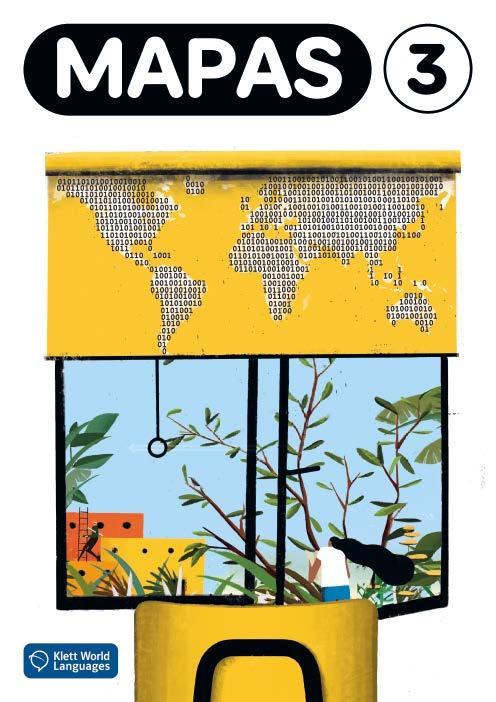

Series’ components include:
• Student Edition
• Workbook
• Annotated Teacher's Edition
• Digital versions on

Keep reading to learn more about each of the components!

The KWL Hub is a platform offering digital content and resources for students and teachers who work with MAPAS. It is designed with a clear purpose in mind: to improve teaching and learning experiences in middle school and high school environments with engaging content and helpful, user-friendly tools.
The KWL Hub is easy, flexible, and intuitive for all users. It includes a variety of resources, as well as robust functionalities that allow teachers to personalize the textbooks, assign homework, correct students’ work, offer feedback, create their own content, track the progress of each student, etc.
The KWL Hub is available as a website and as an app.
Compatible with:
- Smartphones and tablets: iOS and Android.
- Computers: Windows, Mac, Chrome OS and Linux.
OF THE STUDENT EDITION AND THE WORKBOOK
Interactive, browser-friendly versions with sizeadaptable pages that allow for a full digital learning experience. Students can write directly in the writing fields, record themselves, self-correct, re-do activities, attach files and send all of their work to the teacher.
The KWL Hub features the following components and resources:
• Interactive version of the Student Edition
• Interactive version of the Workbook
• eBook version of the Student Edition
• eBook version of the Workbook
• eBook version of the Annotated Teacher's Edition
• Assessment Program
• Grammar tutorials (videos)
• Pronunciation tutorials (videos)
• Scripts for all audio files
• Scripts and subtitles in both English and Spanish for all videos
• Closed captioning on all videos for students with hearing impairments
• Audio recordings of all readings for students with visual impairments
• Worksheets for heritage learners
• Differentiation worksheets
• Assessment, self and peer assessment rubrics
• Interactive grammar and vocabulary quizzes and many more!
EBOOK VERSIONS OF THE STUDENT EDITION AND THE WORKBOOK
eBook versions that allow teachers and students to browse through all the pages and grant them access to all of the video and audio files.
You will learn how to introduce yourself and write a text or piece of writing for an online platform.
You will learn how to talk about noteworthy personalities in the Spanish-speaking world.
` Introduce yourself and others
` Exchange personal information (I)
` Talk about your Spanish class
` Interview: Hola, soy Marcela (Mexico)

` Exchange personal information (II)
` Ask and answer questions
` Express likes and dislikes using me gusta/n, te gusta/n
You will decide what you want to do in your Spanish class and will apply to a study-abroad program in a Spanish-speaking country.
` Express degree using muy, un poco (de)…
` Talk about abilities and knowledge
` Exchange personal information (III) (telephone, email, address…)
` Express intentions and wishes
` Videoblog: Nuestros artistas favoritos (Guatemala)
` Activities to learn a language
` Interesting topics in a Spanish course
` Personal information
` Nationalities and professions
` Numbers 1 to 500
` Adjectives to describe personality

` Short film: Espronceda (Spain)
` Languages
` Leisure activities
` The family
` The verbs saber and conocer

` Subject pronouns (I)
` The present tense of regular verbs (I)
` The verbs ser and llamarse
` Nouns: gender and number
` Definite articles
` Alphabet and sounds
` Present tense of regular verbs (II) and the irregular verbs ser, ir, tener, hacer
` Indefinite articles
` Adjectives: gender and number
` Subject pronouns (II)
` Communication resources in the Spanish classroom
` Basic etiquette
` How to create a text

` Question words (I) questions
Basic connectors: y (e), pero, por eso, también
` Studying vocabulary
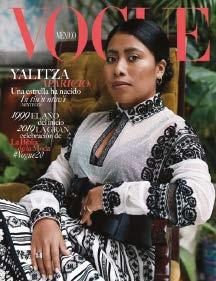
` Stem-changing verbs: e - ie, o - ue, u - ue, e - i
` Irregular verbs in the present: irregular yo forms, verbs with more than one irregularity
` Giving a reason: porque, para, por
` Possessive adjectives
` Rules of accentuation ` Vowels
` Writing emails
` The preposition de

` Linguistic landscape (USA)
` Artistic heritage of the Spanishspeaking community in the United States
` Group: introduce yourselves to the class
` Individual: introduce yourself in writing on an online platform
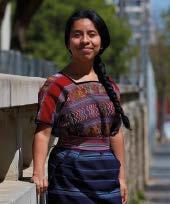
` Celebrities in the Spanish-speaking world
` Cinema and identity in Mexico
` Portraits and selfportraits. David Alfaro Siqueiros (Mexico), Coqui Calderón (Panama), and Dr. Atl (Mexico)
` Group: research and present basic information about the most influential Latinos in the US
` Individual: make an infographic about five influential people in the Spanish-speaking world
` The first academy of an indigenous language: guarani (Paraguay)
` Fernando Iwasaki. Las palabras primas (Peru)
` Group: interview classmates and decide what you want to do in your Spanish class
` Individual: apply to a study-abroad program in a Spanish-speaking country
Lugares
You will make a video report about World Heritage Sites.
` Indicate location
` Identify places
` Describe and compare
` Video report: Las líneas de Nazca: Patrimonio de la Humanidad (Peru)

You will present a diverse and inclusive image of a place in the Spanish-speaking world.
Viajes
You will learn how to talk about travel, famous travelers, and cultural heritage.
` Talk about daily routines
` Express likes, interests, and preferences
` Express agreement and disagreement
` Short film: Chicas Day (Spain)
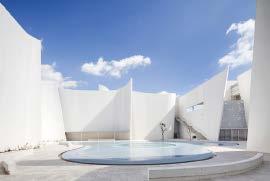
` Talk about travel
` Talk about past actions and events
` Describe places
` Give advice and make recommendations
` Interview: Un venezolano en Lima (Peru)
` At school ` Numbers ` Colors
` Housing, rooms, and furniture
` Location: encima/ debajo de, al lado de
` Places, geography, and culture
` Months and seasons
` Climate and weather
` Telling time
` Routine actions
` The academic calendar and school life
` Ordinal numbers 1 to 10
` Free time activities
` Travel
` Types of accommodation
` Restaurants
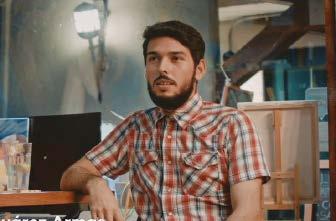
` The verbs ser and estar
` Uses of hay
` Comparatives
` Superlatives
` Formulating questions: question words (II)
` Stressed vowels
` Accentuation rules
` Use of the relative pronouns que, donde
` Objective and subjective descriptions
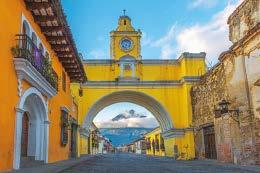
` The verbs gustar, encantar, and interesar
` Reflexive verbs
` Empezar a, terminar de, tener que + infinitive
` Talking about quantity: poco, suficiente, mucho, demasiado
` Word-ending vowels
` Organizing information
` Contrasting arguments
` Making a poster
` World heritage sites in the Spanishspeaking world
` Geography and history in the Spanish-speaking world
` Places of interest in Nicaragua
` Architectural styles in Guatemala
` Group: Make a video report about two places that are World Heritage Sites
` Individual: prepare a travel guide on your community or another place of your choice
` The preterite of regular verbs
` The preterite of
` People of Panama
` Images of Spain in art

` Change of meaning due to stress
` Unstressed

` Connectors of cause: porque, como, por eso
` Connectors of consequence: así que, de manera que
` Time markers
` Relative pronouns: donde, en + el/la/ la/los/las + que
` Learning journals
` Countries and cities in the Spanishspeaking world
` The Caribbean and its pirates
` Travel literature: Andrés Neuman (Argentina)
` Group: Prepare a presentation about a place in a Spanish-speaking country
` Individual: Write about an important day in your community
` Group: make a presentation about historical journeys and travelers
` Individual: write a historical blog about a group who migrated
En este capítulo vas a realizar un cuestionario para conocer mejor a tus compañeros/as.
` Talk about personality
` Talk about skills
` Talk about projects
` Talk about likes and interests
En este capítulo vas a aprender a hablar de historia.
` Describe people, objects, places and situations in the past
` Talk about habitual actions in the past
` Talk about changes and similarities
En este capítulo vas a contar una historia a partir de una imagen.
` Express agreement and disagreement
` Talk about what we would do in certain circumstances

Talk about past events
Talk about feelings and emotions
Describe an object
` Institutional advertising: La voz es nuestra (Mexico)
` Personality Adjectives
` Room and furniture
` Free time activities

` Interview: Denisse Hellion, antropóloga (Mexico)
` Historical periods and events
` Opposites
` The stages of life

` Short-film: Juntos en familia (Chile)
` The verbs prestar, dejar, pedir, and deber
` Feelings and emotions
` Social relationships
` Romantic relationships
` Objects: shape, material…

En este capítulo vas a aprender a hablar sobre moda y a escribir recomendaciones para comprar ropa.
` Examine and give opinions about the world of fashion
` Talk about clothing
` Talk about the human body
` Give advice and orders
` Make suggestions
` Refer to something already mentioned
En este capítulo vas a aprender a preparar un menú y a escribir un artículo sobre comida para un blog.
` Talk about eating habits
` Order food in a restaurant and devise a menu
` Describe a dish
` Give instructions
` Give advice, and make suggestions
` Ask and answer about preferences
` Comment and give personal opinions
Vas a aprender a prepararte para una entrevista de trabajo y a hacer un video de presentación.

` Video report: De compras (Mexico)
` Clothing and accessoires
` Materials and patterns
` Colors

` Recipe video: Un plato peruano (Peru)
The body
Verbs referring to clothing: ponerse, llevar, probarse and quedar bien/ mal
` Dishes and recipes
` Weights, measurements and packaging

At the restaurant
Illnesses and health problems
` Talk about experiences
` Express feelings
` Talk about skills and talents
` Talk about future plans
` Talk about the way we acquire an ability
` Video résumé: Un vídeo de presentación
` The world of work
` Adjectives to describe moods
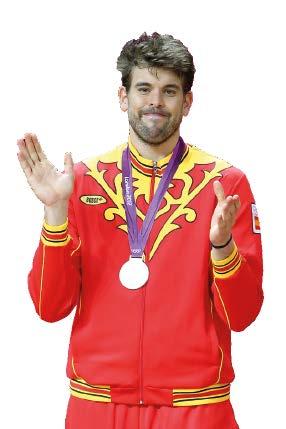
Abilities and personality
Professions and experience
LANGUAGE STRUCTURES SOUNDS
` Affirmative and negative tú commands
` Pronouns with commands
` Conditional sentences: si + present, command / si + present, present
` p, t, and k
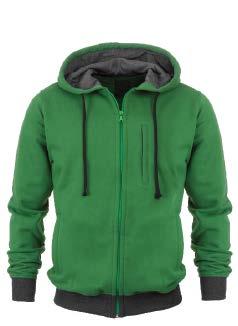
` Commands with usted and ustedes
` Giving instructions using the infinitive, the command forms and the present
` Giving instructions using constructions with se
` Giving advice and recommendations
` Stressed syllables
` Intonation: orders and instructions
` Text cohesion devices
` Referring to something already mentioned
` Characteristics of a journalistic text
` Alpaca fiber (Peru)
` New Latin American designers (Bolivia and México)

` Texts to comment on and analyze graphs
` Analyzing and commenting on graphs

` Uses of the present participle
` The present perfect
` Uses of por and para
` Past participles used as adjectives
` Forward positioning of t/d
` Connectors of sequence: en primer lugar, en segundo lugar, por último
` Giving an oral presentation
` Gastronomic cultures in the Spanish-speaking world
` Venezuelan arepas
` Cooking in the detective novels of Leonardo Padura (Cuba)
` Group: develop guidelines for buying clothes
` Individual: write an article about buying clothes
` Group: present a typical Hispanic menu
` Individual: write an informative article for a blog about nutrition and health
` The job market in Spain and Latin America
` Skills needed to find a job
` Education in Costa Rica
` The photographer Karla Gachet (Ecuador)

` Group: practice a job interview
` Individual: produce a video résumé

En este capítulo vas hacer una reseña en video de un producto cultural.
` Discuss art, literature, music and entertainment
` Talk about sports
` Compare cultural products
` Narrate a story in the past
` Blue & Malone: Casos imposibles (animated short film, Spain)
` Culture ` Entertainment ` Sports

En este capítulo vas a aprender a hablar sobre el futuro.
` Make predictions
` Talk about future actions
` Place an action in the future
` Express gradual increase or decrease
En este capítulo vas a proponer soluciones para mejorar la gestión del tiempo.
` Compatible (short film, Spain)
` Education and learning
` Ya, aún no / todavía no
` Technological advancements
` Future and career

` Compare statistics, data, and schedules
` Talk about future events
` Give advice
` Catalina (short film, Mexico) ` Time management
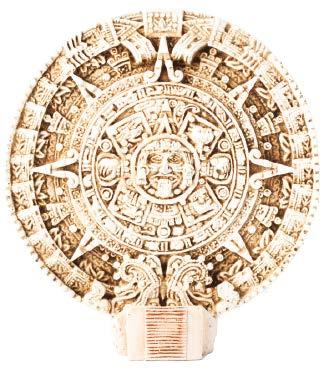
` Preterite vs. imperfect (review) and the past progressive
` Pronouns: direct object, indirect objetc, double object pronouns (review)
` Comparisons and superlatives: mejor, peor
` Time expressions with hacer
` The future
` Talking about actions: starting, stopping and duration (seguir + present participle, empezar a/ dejar de + infinitive)
` Conditional sentences with future. Review of conditional sentences with present / commands
` The present subjunctive
` Giving advice and making comments: es + adjective + infinitive / que + subjunctive
` Using the subjunctive or the indicative with cuando
` Intonation of subordinate clauses when telling a story
` How to prepare an online review

` b, d and g
` The intonation of non-neutral questions
` Organizing information: por un lado, … por otro lado; por una parte, … por otra parte
` Time markers
` Online discussion boards
` A documentary: Lorena la de pies ligeros (Mexico)
` A graphic novel: Mocha Dick (Chile)
` Group: create and play a game about culture and entertainment
` Individual: create a video review of a cultural product
` Hispanic and latinx presence in the US
` Education in the US: Victor Rios

` Use of the comma
` Interpreting an argumentative text
` The article lo

` Mayan time (Mexico, Belize, El Salvador, Honduras)
` A poem by Gioconda Belli (Nicaragua)
` Group: prepare a group presentation about the future of some specific areas (work, education, etc.)
` Individual: make a video to present what your life will be like 15 years from now.
` Group: propose solutions for improving your time management
` Individual: write a report on students’ schedules
En este capítulo vas a hacer un cuestionario sobre la conciencia ecológica de tu comunidad.
En este capítulo vas a crear un autorretrato emocional.
` Make suggestions and give advice
` Explain problems and discuss the causes
` Express wishes and desires, needs, requests, and complaints

` Express emotions
` Thank, congratulate and apologize
` Give advice, persuade and influence others, and ask for something politely
En este capítulo vas a aprender a hablar de acontecimientos históricos.
` Describe historical events
` Express opinion
` Express agreement and disagreement
` La audición (short ` Emotions and

` Sorojchi (documentary, Bolivia)
` History and politics
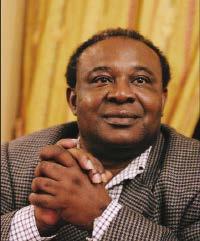
LANGUAGE STRUCTURES
` Expressing wishes and desires: querer, esperar, desear que and ojalá + subjunctive
` Making requests and demands: pedir, exigir, solicitar que + subjunctive
` Making recommendations and suggestions (I): recomendar, aconsejar and sugerir que + subjunctive
` The conditional
` Expressing feelings and emotions: encantar, molestar que + subjunctive
` Verbs to express feelings and emotions in reflexive constructions
` Making recommendations with ser and parecer
` G and j
` The ch group
` Connectors of cause and effect
` Text cohesion devices
` Translating a text
` Barro Colorado (Panama)
` Contemporary art in Chile. Los quipus de Cecilia Vicuña

` Universal intonation patterns compared to those specific in Spanish
` Expressive and directive speech acts
` Intensifying with qué and cómo
` Combining speech act
` How to write a film review
` An interview with Lita Cabellut (Spain)
` Uruguayan poetry: Idea Vilariño and Mario Benedetti
` Group: create a survey about ecological conscience and propose steps to improve the situation
` Individual: write an article for your school’s blog about the environment
` The past perfect
` Narrating past events
` Relative clauses with preposition (a la que, con el que, para los que…)
` Como/cómo, cuando/cuándo, donde/dónde
` The letter ñ
` Accents on word
` Enriching vocabulary: nominalization
` The historical (narrative) present
` The use of metaphors in journalism
` Group: record a short film about emotions
` Individual: create an emotional selfportrait

` The history of El Salvador
` Writers in Spanish and the Hassaniya language of the Western Sahara
` Group: present a historical event through a memorial site
` Individual: make a timeline depicting achievements in recent centuries
En este capítulo vas a hacer un noticiario en formato podcast con noticias positivas y a redactar un artículo o una noticia sobre un avance científico.
` Analyze and discuss facts
` Talk about the news
` Understand texts about scientific news
` Documentary: La eminencia (documentary, Spain)
` Science ` Current affairs ` Ethics

En este capítulo vas a aprender a diseñar una campaña publicitaria y a opinar sobre un tema relacionado con la publicidad.
En este capítulo vas a investigar sobre personas influyentes en internet que hablen o escriban en español.
` Express personal opinions and make comments
` Express purpose
` Construct an argument
` Explain what something is
` Advertising campaign: Héroes que nos inspiran (Argentina)
` Marketing and advertising
` The goals of advertising

` Reported speech
` Understanding apologetic texts
` Talk about future actions (II)
` Short film: Por su cuenta (Colombia)
` The internet and social media
` New ways of working ` Anglicisms

` Subjunctive (Overview)
` Subjunctive with conjunctions
` Subjunctive with the unknown
` Consonant + r, consonant + l
` How to create a podcast

` Negating and expressing certainty with the subjunctive and indicative
` Expressing purpose: para +infinitive
/ para que + subjunctive
` Word families
` Exclamatory intonation
` Connectors of addition
` Advertising

` Indicative vs. subjunctive with que, quien(es), como, cuando, donde, como
` The future perfect
` Reported speech
` The ll group
` Expressing doubt through intonation
` Precision and lexical variety: alternatives to the verb decir
` Summarizing
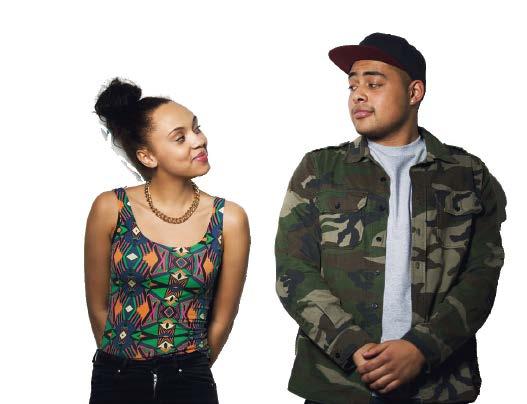
` Four technological advances for a better world (Argentina, Ecuador, Guatemala, Peru)
` The photography of Juan Pablo Gutiérrez (Colombia)
` Group: create a news broadcast featuring a positive story
` Individual: write an informative news article about a scientific topic.
` The No Campaign (Chile)
` Orlando Arias: art and consumerism (Bolivia)
` Barbarita Lara’s emergency alert system (Chile)
` Kentukis, de Samanta Schweblin (Argentina)
` Group: design an advertising campaign
` Individual: write an opinion essay about a topic related to advertising practices
` Group: give a presentation about an influential Spanish-speaking internet personality
` Individual: write an article comparing two influential people
En este capítulo vas a aprender a diseñar una campaña de promoción de una tradición y a hablar de tradiciones controvertidas.
` Talk about past events
` Describe traditions
` Express opinions about events
` Video report: La fiesta de la Candelaria (Mexico)
` Traditions, celebrations, and rites

En este capítulo vas a aprender a hablar de los logros de mujeres importantes del mundo hispanohablante.
En este capítulo vas a aprender a hacer un mapa de tu aprendizaje del español.
` Express wishes
` Report what someone said
` Conditions with different degrees of probability
` Video report: Feminismo en Perú (Peru)
` Discrimination and society

` Describe contraryto-fact situations in the past
` Discuss past and future events
` Make hypotheses about how things could have been in certain circumstances
` Mockumentary: Let's go to Antarctica! (Spain)
` Geography
` Nature and landscape
` Imaginary worlds
` Learning

` Passive constructions
` Emphasizing with lo + adjective / adverb
` Narrating past events (review)
` The letter l ` Alternative questions
` Expressing impersonality
` Expository text

` Conditional sentences: si + imperfect subjunctive, conditional
` Reported speech with requests and advice
` Expressing wishes with the imperfect subjunctive
` Pronunciation differences in Spanish around the world
` Academic texts

` Traditions, celebrations, and rituals in the Hispanic world
` Popular festivities in Honduras
` Alexis DíazPimienta, Cuban repentista poet
` Group: design an ad to promote a cultural event in a Spanish-speaking country
` Individual: write a report about a controversial tradition
` The present perfect subjunctive
` The past perfect subjunctive
` The conditional perfect
` Past conditionals
` Parenthetical intonation
` Intonation to express obviousness and doubt
` Past, present and future of women
` Significant contributions to the Spanish-speaking world made by women
` Puerto Rico and the bolero
` Susana Baca, Peruvian musician
` Group: do a presentation about a woman who played a key role in the history or politics of Latin America
` Individual: write an academic essay about the representation of women in art

design and create a map about
Write an email to the future
In addition to the Student Edition, MAPAS includes the following components:
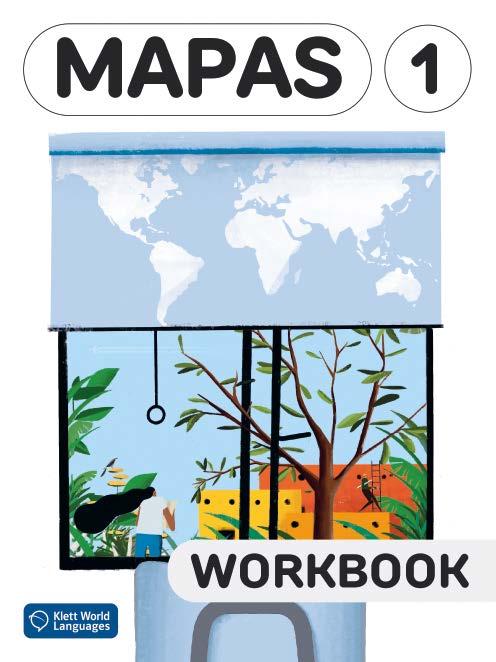
The MAPAS Workbook offers a wide range of activities for practicing and reinforcing the grammar and vocabulary introduced in the Student Edition. All activities come in the form of tear-out sheets for easy use.

The MAPAS Annotated Teacher's Edition is richly annotated to accommodate diverse teaching approaches. These annotations are designed to streamline class preparation and course management while also offering suggestions for expanding certain activities.
MAPAS includes a comprehensive range of supplementary materials designed to simplify teachers' lives.


4.
3.
¿QUÉ TEMAS INTERESAN A LOS ADOLESCENTES DE HERENCIA LATINA?

Encuestas recientes indican que los intereses actuales de la población latina adolescente varían de acuerdo con sus experiencias personales, intereses individuales y antecedentes culturales. Sin embargo la mayoría menciona los siguientes temas como los más interesantes:
LA CULTURA Y LA HERENCIA: quieren aprender más sobre la historia y la cultura de los países de origen de su familia. Por ejemplo, sus tradiciones y su gastronomía.
LAS RELACIONES INTERPERSONALES: es decir, las relaciones con amigos, familiares y compañeros de clase.
LA IDENTIDAD Y LA DIVERSIDAD: tienen mucho interés en temas relacionados con la identidad étnica y racial, la diversidad cultural y la inclusión.
LA SALUD Y EL BIENESTAR: están interesados en aprender más sobre la nutrición, el ejercicio y el manejo del estrés.
EL ACTIVISMO Y LA PARTICIPACIÓN CÍVICA: tienen interés por cuestiones relacionadas con el medioambiente, la justicia social o los derechos de los inmigrantes.
También mencionan otros, como, por ejemplo la educación, el futuro profesional, los deportes, la música, el cine, la tecnología y las redes sociales

Differentiation Worksheets offer two distinct versions of an activity, catering to students requiring additional support and those seeking more challenging tasks.
Heritage Worksheets propose adaptations and/or extensions of key activities along with more challenging authentic and learner-adapted texts with pre-, during-, and post-reading activities.

The Assessment program is comprised of Pruebas de capítulo, which are dual-purpose tests encompassing closed-ended and semi-open exercises related to grammar, vocabulary, interpretive reading, listening, and presentational writing. Additionally, the program includes Evaluaciones IPA, featuring communication activities based on genuine documents and students’ responses to them. These activities cover the three communication modes and include rubrics.
MAPAS’ Assessment Rubrics are based on the ACTFL Performance Descriptors for Language Learners. They describe how well learners perform and are organized according to three ranges of performance (Novice, Intermediate, and Advanced) and three modes of communication.
Each text in the MAPAS Student Edition comes with two special features to enhance language learning. TEXTOS MAPEADOS transform the text into a color-coded "roadmap," highlighting frequently-used word combinations, common connectors, and complex structures. TEXTOS LOCUTADOS offer an audio version of the text, read aloud by native Spanish speakers from Colombia, Mexico, Spain, and the Caribbean (Puerto Rico and Cuba).
Estas son personas creativas y talentosas que trabajan a favor del reconocimiento de la diversidad cultural en los países de habla hispana
Aldo Villegas, Bocafloja
¿Quién es? Un artista de hip hop mexicano.
¿Dónde vive? En Estados Unidos. ¿Qué hace? Hace rap, escribe poesía y hace documentales sobre la discriminación de la cultura afrodescendiente en América Latina.
Lía Samantha
¿Quién es? Una diseñadora de moda y cantante colombiana. ¿Dónde vive? En Colombia. ¿Qué hace? Diseña moda y canta sobre las culturas afrodescendientes en el Caribe.
Sara Curruchich
¿Quién es? Una cantautora guatemalteca. ¿Dónde vive? En Guatemala. ¿Qué hace? Compone canciones toca la guitarra y canta a favor del respeto a los pueblos originarios
Domingo Antonio Edjang Moreno (El Chojin)
¿Quién es? Un cantante de rap y conductor de radio y televisión español. ¿Dónde vive? En España.
¿Qué hace? Hace música, escribe artículos y trabaja con organizaciones contra la discriminación y el racismo.
Inti Castro
¿Quién es? Un artista urbano chileno.
¿Dónde vive? En Barcelona. ¿Qué hace? Pinta murales con crítica social y personajes característicos de las culturas andinas.
mundo en 100
En el mundo viven aproximadamente 7 500 millones de personas, con un crecimiento aproximado de un 1 % al año.
INFORMACIÓN
% Tienen acceso a internet.
% No tienen acceso a internet.
Algunos marcadores y conectores Combinaciones frecuentes Verbos, sustantivos y adjetivos con preposiciones
ALFABETIZACIÓN
83 % Saben leer. 17 % No saben leer.
EDAD
26 % Menos de 15 años 62 % De 16 a 65 años 12 % Más de 65 años
87 % Tienen acceso a agua potable 13 % No tienen acceso a agua potable.
Algunos marcadores y conectores Combinaciones frecuentes Verbos, sustantivos y adjetivos con preposiciones
MAPAS' supplementary materials encompass a wide range of resources, including grammar tables, maps, lesson plans, and much more.
Do other people have an effect on the development of your identity? How so?
Escuela de Formación Deportiva EDWIN GUEVARA


NOMBRE: Sandra Milena Rodríguez Jaramillo
ID: TI.1013577920
Deportista
0+
BOGOTÁ D. C
Pregunta esencial is a broad and open-ended question that promotes engagement with the topic. It allows students to reflect on their own understanding of the topic and connect this core knowledge to 21st century skills.

Páginas de Entrada
The introductory pages present the content of the chapter organized by the seven areas that are developed throughout the chapter (learning outcomes, video, vocabulary, language structures, oral and written texts, sounds, culture and projects).
The chapter opener photos focus on the chapter's theme. They were chosen as a springboard for conversation and a link to the Pregunta esencial (essential question).
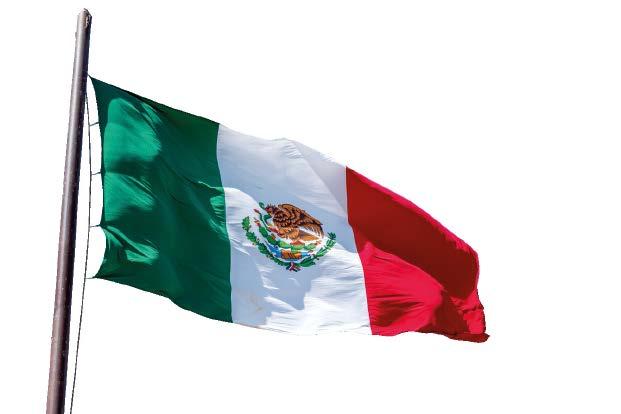









In this chapter, you will learn how to talk about noteworthy personalities in the Spanish-speaking world.
LEARNING OUTCOMES
Exchange personal information (II)
Ask and answer questions
Express likes and dislikes using me gusta(n), te gusta(n)
VIDEO
Nuestros artistas favoritos (videoblog)
VOCABULARY
Personal information
Nationalities and professions
Numbers 1 to 500
Adjectives to describe personality
LANGUAGE STRUCTURES
Present tense of regular verbs (II) and the irregular verbs ser, ir, tener, hacer
Indefinite articles
Adjectives: gender and number
Subject pronouns (II)
Question words (I)
SOUNDS
Intonation: questions
ORAL AND WRITTEN TEXTS
Basic connectors and conjuctions: y (e), pero, por eso, también
Studying vocabulary
CULTURE
Celebrities in the Spanish-speaking world
Cinema and identity in Mexico
Portraits and self-portraits. David Alfaro Siqueiros (Mexico), Coqui Calderón (Panama), and Dr. Atl (Mexico)
PROJECTS
Group: research and present basic information about the most famous Latinos in the US
Individual: make an infographic about five influential people in the Spanish-speaking world
PREPÁRATE
Para empezar
This section presents images, charts, quotes, graphics, and other written prompts with meaningful information, but minimal written text, which allows students to work on comprehension activities. It is through these prompts that students warm up to different content in the chapter.
1. Look at these photos of prominent Latino and Spanish personalities and match them with the descriptions below by writing the numbers. You may search online.
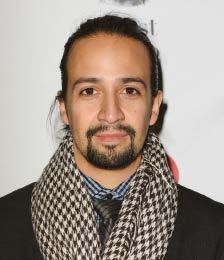
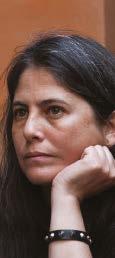
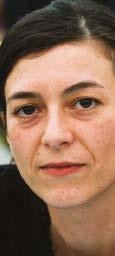
1. Actriz española


2. Directora de cine peruana
3. Director de orquesta venezolano
4. Compositor y actor de origen puertorriqueño


5. Cantante mexicana

Here, and throughout MAPAS, active vocabulary is highlighted in yellow, which draws students’ attention to how these words are used in context.
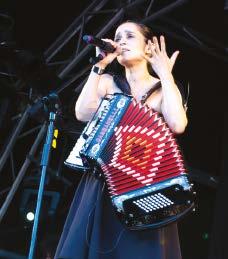
6. Política chilena, dos veces (twice) presidenta de Chile
7. Directores de cine mexicanos
8. Escritoras argentinas
2. Do you know of any other prominent figures from the Spanish-speaking world? Search for photos online to present in class.
3. In pairs, compare your answers to activity 1. You may use the following structures:
¿Quién es el hombre/la mujer de la foto?
¿Quién es la persona de la foto?
¿Quiénes son los hombres/las mujeres de la foto?
¿Quiénes son las personas de la foto?
Es Claudia Llosa, una directora de cine peruana muy famosa
Es Gustavo Dudamel, un
Son…, unas escritoras argentinas
Son…, unos
ATENCIÓN
We use the indefinite article ( un, una, unos, unas) to identify a person. For example, when we respond to the question: ¿Quién es Ana de Armas?
Ana de Armas es una actriz cubana famosa
We do not use the article when speaking only about a person's profession: Ana de Armas es ø actriz.
Students are encouraged to search the internet for information about different sociological or cultural topics in order to expand their knowledge of the Spanish-speaking world.
ATENCIÓN un actor una actriz unos directores unas escritoras
4. In groups of three or four, share your answers to activity 2 and ask each other questions about the prominent figures.
PREPÁRATE
5. Look at this Colombian student’s personal information. How many last names does this student have? Where does each last name come from?
Apellidos: Hernández Ruiz Nombres: Carla
Fecha de nacimiento: 03.11.2013
Dirección: Calle 12A APTO. 502 5P Barrio Los Cedros, Cali
Nombre del padre: Juan José Hernández Rodríguez
Nombre de la madre: Elena Ruiz Gutiérrez
Sexo: Femenino
Teléfono: 5718673210
Teléfono: 5718314509
Usually the first last name comes from the father and the second from the mother, but each family can choose whether they wish to maintain this order.
6. Look at the map and search online to answer these questions and find famous Latinos/as with these last names.
• ¿Cuál es el origen del apellido Quispe, el más común en Perú?
• ¿Por qué hay tantos apellidos que terminan en –ez? ¿Tiene algún significado?
1. Hernández, México
2. López, Guatemala
3. Hernández, El Salvador
4. Martínez, Honduras
5. Rodríguez, Costa Rica
6. López, Nicaragua
7. Rodríguez, Cuba
8. Rodríguez, República Dominicana
9. González, Panamá
10. Zambrano, Ecuador
11. Rodríguez, Venezuela
12. Rodríguez, Colombia
13. Quispe, Perú
14. Flores, Bolivia
15. González, Chile
16. González, Paraguay
17. Rodríguez, Uruguay
18. González, Argentina
7. In pairs, compare your answers to activities 5 and 6.
Foro de discusión
A resource that presents topics that break down the walls of the classroom and spark conversations about essential questions. In many cases, they may take on linguistics, but in others, the main goal is developing persuasive and critical thinking skills, or showing the connections between learned content and real life.
FORO DE DISCUSIÓN
What are the most common last names in your culture? Do you know what your last name means?
¿Cuáles son los apellidos más frecuentes en tu cultura? ¿Sabes qué significa tu apellido?
PREPÁRATE
8. Watch the video and use the words below to complete the table.
Video
Each chapter includes a video with culturally meaningful content and thought-provoking themes. Activities associated with the videos aim to foster comprehension as well as promoting oral communication.
Santiago comunicóloga Caifanes músico Buenos Aires Kadmon
Guatemala Monisa Charly García Anette México
NOMBRE PAÍS PROFESIÓN
ARTISTA FAVORITO O BANDA FAVORITA
9. Watch the video again and complete what each person says.
1. Hola, ¿qué tal? Soy Soy de Soy Una de mis bandas favoritas aquí en México es Me gustan mucho, son pioneros del rock en español aquí en México.
2. Hola, me llamo , soy de Soy Mi artista favorito es Me gusta desde chico.
3. Hola, me llamo Soy de Mi banda favorita se llama . Tocan jazz y me gustan mucho sus conciertos, son muy buenos.
10. In small groups, compare your answers to activities 8 and 9.
ATENCIÓN
Soy… Me llamo… Soy de... Me gusta mucho… Mi banda favorita es…
11. Listen to music from the artists and bands mentioned in the video. Do you like them? Why?
(No) me gusta la música / la imagen. Las letras (lyrics) (no) son interesantes.
12. Think of a word or short phrase in English that you associate with the music of these groups. Then translate it to Spanish and share it with your classmates.
13. In pairs, present your favorite music artist or band to each other.
Una de mis bandas favoritas es Es de Me gustan porque
Mi artista favorito/a es / se llama Es de Me gusta porque
Mi artista favorita es Ariana Grande, me gusta porque canta muy bien.
FORO DE DISCUSIÓN
What does your taste in music say about you?
¿Qué dicen de ti tus intereses musicales?

México País: Género:
2019 Año: Videoblog
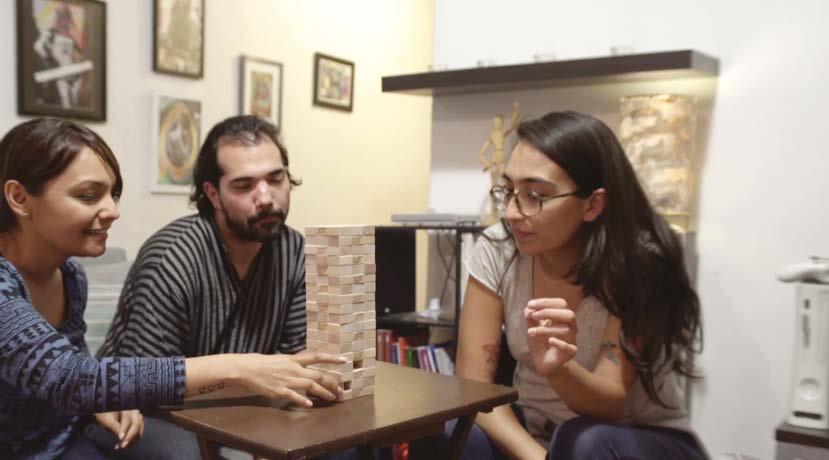
The 6 VIDEOS have been carefully selected from different genres: real-life, documentary, fiction, interview, etc.


Documentos para descubrir
PREPÁRATE
14. Read the text and complete the sentences with the correct names.
In this section, students will find textbased activities that scaffold skill-building. The diversity and quality of texts included in Documentos para descubrir allows students to approach each one from different angles—vocabulary, reading and listening comprehension, communication— all of it in dialogue with sociocultural practices and products.
Estas son personas creativas y talentosas que trabajan a favor1 del reconocimiento2 de la diversidad cultural en los países de habla hispana.

ALDO VILLEGAS, BOCAFLOJA
¿Quién es?
Un artista de hip hop mexicano.
¿Dónde vive?
En Estados Unidos.
¿Qué hace?
Hace rap, escribe poesía y hace documentales sobre la discriminación de la cultura afrodescendiente en


¿Quién es?
Una diseñadora de moda3 y cantante colombiana.
¿Dónde vive?
En Colombia.
¿Qué hace?
Diseña moda y canta sobre las culturas afrodescendientes en el Caribe.
¿Quién es?
Una cantautora guatemalteca.
¿Dónde vive?
En Guatemala.
¿Qué hace?
Compone canciones, toca la guitarra y canta a favor del respeto a los pueblos originarios4.
• y viven fuera de sus países de origen. y escriben.
• , , y cantan.
• y son sudamericanos.
TEXTO LOCUTADO Y MAPEADO
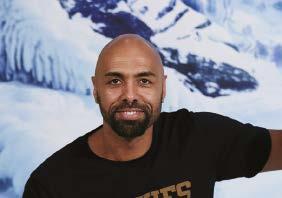
DOMINGO ANTONIO EDJANG MORENO, EL CHOJIN
¿Quién es?
Un cantante de rap y conductor de radio y televisión español.
¿Dónde vive?
En España.
¿Qué hace?
Hace música, escribe artículos y trabaja con organizaciones contra la discriminación y el racismo.

¿Quién es?
Un artista urbano chileno.
¿Dónde vive?
En Barcelona.
¿Qué hace?
Pinta murales con crítica social y personajes5 característicos de las culturas andinas.
GLOSARIO
1 a favor de: in favor of
2 el reconocimiento: appreciation
3 la moda: fashion
4 los pueblos originarios: indigenous peoples
5 el personaje: character
15. Do you know any artist committed to social issues or working to build community? Choose one and write a brief description of him or her.
Es un pintor / una pintora de la costa oeste… Vive en Santa Fe…
Es uno de los artistas más representativos de… una de las artistas más famosas de…
Hace música/fotografías
Escribe poesía/libros… En sus libros/canciones… habla sobre Me gusta porque
16. In pairs, compare your answers to activity 14.
17. In groups, read your descriptions from activity 15 and choose the most interesting artist to present to the rest of the class.
18. Present the artist to the class.
Activities with this heading can be assigned as homework, or as a warm-up activity.
Nosotros presentamos a Logan Hicks. Es un artista urbano muy famoso. —Vive en Nueva York…
ESTRATEGIAS
Use your knowledge of English and other languages to make connections and identify similar words. artista – artist diversidad – diversity
19. Read the text from activity 14 again. Then match the words in the two columns to create sentences.
1. Lía es…
2. Aldo y Domingo hacen…
3. Inti y Aldo viven en…
4. Sara toca…
5. Sara y Lía son…
a. la guitarra. b. rap. c. cantantes. d. colombiana. e. el extranjero
20. Use the words below to complete the information about these prominent Guatemalans. You may search online. Share your answers with your classmates.
cantautor(a) programador(a) activista Estados Unidos Guatemala Grammy a la mejor artista nueva Premio Nobel de la Paz Premio MacArthur México � SEARCH
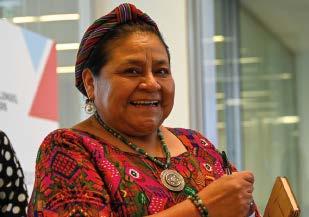


es , vive en , es ganadora (winner) del
Gaby Moreno es , vive en , es ganadora del
Luis von
es , vive en , es ganador del
21. Read the words below. Do you know their meaning? You may use a dictionary. continente vivienda alfabetización idioma agua información
22. Look at this infographic about the world population. Read the five statements below and correct the wrong information.
En el mundo viven aproximadamente 7500 millones de personas, con un crecimiento1 aproximado de un 1% al año.
escala: 1:75 000 000.
Texto locutado y mapeado
MAPAS offers students the unique feature of Textos locutados y mapeados. The mapping of these texts identifies three different linguistic features: connectors, frequently combined words, and verb combinations. Textos locutados are a fantastic source of samples of different variations of Spanish. Students can use them to focus on pronunciation, to compare, and to appreciate linguistic variation.

Fuente de los datos: 100people.org
1. Cinco personas de cada cien viven en el continente americano.
2. Veintiséis personas tienen menos de sesenta y seis años.
3. Nueve personas hablan español.
4. Siete personas no tienen acceso a internet.
GLOSARIO
1 el crecimiento: growth 2 tener acceso a: to have access to 3 saber: to know, to be able to 4 la vivienda: housing 5 la edad: age 6 potable: drinking
PREPÁRATE
ATENCIÓN
0 cero
1 uno/un/una
2 dos
3 tres
4 cuatro
5 cinco
6 seis
7 siete
8 ocho
9 nueve
10 diez
11 once
12 doce
13 trece
14 catorce
15 quince
16 dieciséis
17 diecisiete
18 dieciocho
19 diecinueve
20 veinte
21 veintiuno/ún/una
22 veintidós
23 veintitrés
30 treinta
31 treinta y un/un/una
32 treinta y dos
40 cuarenta
50 cincuenta
60 sesenta
70 setenta
80 ochenta
90 noventa
100 cien
101 ciento uno/un/una
111 ciento once
200 doscientos/as
220 doscientos/as veinte
300 trescientos/as
400 cuatrocientos/as
500 quin ientos/as
23. Listen to these students talking about the infographic. Check the categories they mention. J continente J vivienda J idioma J agua J edad J alfabetización J información
24. Listen to the rest of the conversation and complete the information with the correct numbers.
América Latina y el Caribe en 100 personas
1. viven en Sudamérica; , en México y Centroamérica, y , en el Caribe.
2. hablan español; , portugués; , inglés; , una lengua de un país originario y hablan francés.
3. no tienen internet.
25. In pairs, compare your answers to activities 21, 22, 23, and 24.
26. Listen to the audio and complete the text with the correct numbers using the spaces below.
El español es el idioma oficial de (1) países. Los países con mayor población1 son México, Colombia y España. En México viven aproximadamente (2) millones de personas. España y Colombia tienen aproximadamente (3) millones de habitantes2. La población latina en Estados Unidos también es importante: con poco más de (4) millones, representa el (5) % de la población total.
TEXTO LOCUTADO Y MAPEADO

Los países hispanohablantes tienen una gran diversidad étnica, cultural, lingüística y una biodiversidad notable3. Colombia, Ecuador, México, Perú, Estados Unidos y Venezuela forman parte4 de los (6) países 'megadiversos'. Se llaman así porque tienen más del (7) % de la biodiversidad del planeta. España es el país europeo con mayor biodiversidad.
27. Check the numbers that you hear.
1. J 15 J 5
2. J 2 J 12
3. J 6 J 7 4. J 8 J 80 5. J 39 J 93 6. J 4 J 44
GLOSARIO
1 mayor población: higher population
2 el/la habitante: inhabitant 3 notable: remarkable
4 formar parte de: to be a member of
Cómo funciona la lengua
PREPÁRATE
28. Read Linda's blog post about the Latino population in the US. Highlight information that is new to you in one color and information that you already know in a different color.
This section offers scaffolding activities that focus on form. Here, students have the opportunity to advance into more complex structures. It includes models and examples that target the form and structures, and gives students the chance to work inductively when analyzing grammar structures. Meaningful lexical bundles of language are highlighted in blue.
The final part of this section is called SONIDOS and addresses a wide spectrum of oral input and practice in Spanish. Students will find activities focused on specific phonemes as well as exercises emphasizing intonation.

Hola, soy Linda Ramírez, vivo en Los Ángeles con mis padres. Mi madre es de origen mexicano y mi padre, ecuatoriano. En Los Ángeles vive mucha gente de origen latino. También los estados de Texas, Florida y Nueva York tienen un porcentaje importante de población latina.
Los latinos son el grupo de población más joven en Estados Unidos. En mi escuela estudian muchos jóvenes latinos. Yo tengo 15 años, soy ciudadana estadounidense y estoy en décimo grado.
Afortunadamente, muchas personas creen en la juventud latina. Yo creo que todos los jóvenes que vivimos, estudiamos y trabajamos en este país tenemos derecho1 a las mismas oportunidades. Por eso2 soy activista a favor de los derechos de los inmigrantes. Me gusta ayudar a la gente.
ESTRATEGIAS
Underline grammatical structures in the text that can help you talk about your own life. Discovering Spanish grammar rules on your own will help you learn the language more effectively.

1 tener derecho a: to have the right to 2 por eso: for that reason 3 ayudar: to help
PREPÁRATE
29. Scan the text in activity 28 to find the present indicative forms that are missing in this table. Then, complete the table.
verbos regulares
verbos irregulares TRABAJAR
TENER yo trabajo tú trabajas crees vives eres tienes él, ella, usted trabaja cree tiene nosotros, nosotras creemos somos tenemos vosotros, vosotras trabajáis creéis vivís sois tenéis ellos, ellas, ustedes trabajan creen viven
30. Complete these sentences about Linda.
Linda 15 años y estudiante en de décimo grado. estadounidense, pero sus padres de origen latino.
31. In pairs, compare your answers to activities 28, 29 and 30.
32. In groups of three, go online to find out which are the main countries of origin of Latinos in the United States.
Los principales países de origen de los latinos en Estados Unidos son…
33. In the same groups, write a brief description of three famous Latino personalities.
Prepárate has a strong scaffolding function, preparing students to activate critical thinking as they inductively predict forms and syntactic rules to later use them in isolation or in conversation.
Zoe Saldaña es una actriz estadounidense. Sus padres son de origen dominicano y puertorriqueño. Zoe habla inglés, español e italiano. Vive en…
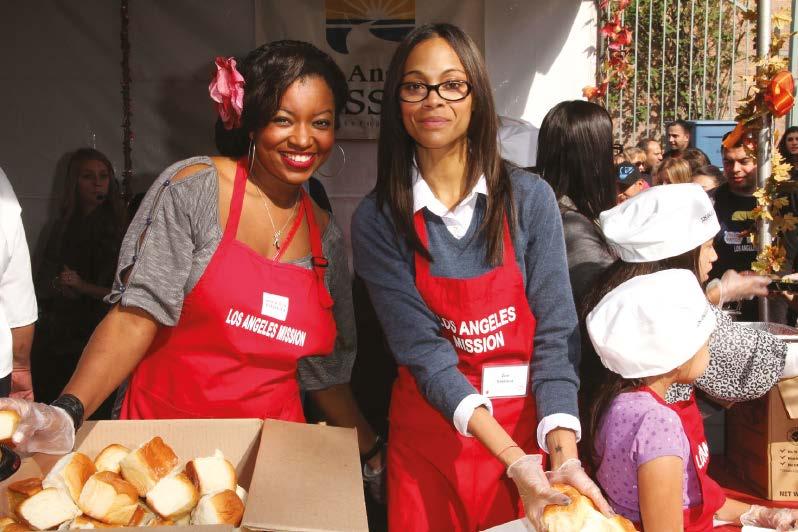

GRAMÁTICA ESENCIAL
PRESENT INDICATIVE (I)
PREPÁRATE
34. Read and listen to these conversations. Match them with the photos.

1.
¡Hola! Tú eres la chica estadounidense de intercambio, ¿no?
Sí, me llamo Alyssa, ¿y tú?
Soy Ana. Encantada.
This section includes Tutoriales de gramática, video tutorials about grammar topics from the chapter.
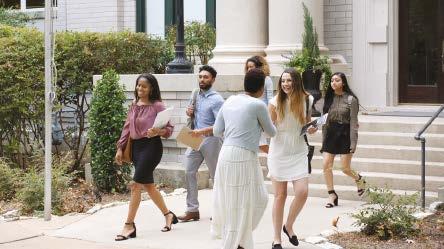
2. – Buenos días, ¿es usted la profesora visitante colombiana?
Sí, soy Sheila López. ¿Y usted?
Yo soy Marta Díaz, del Departamento de Sociología. Mucho gusto.
35. Which of the two previous conversations is more formal? What differences do you see and hear in the use of names, pronouns, and verb forms? In pairs, complete the table below.
RECURSOS INFORMALES EN ESPAÑOL
Nombres: Alyssa (nombre)
Pronombres:
Formas verbales:
RECURSOS FORMALES EN ESPAÑOL
Nombres: Marta Díaz (nombre y apellido)
Pronombres:
Formas verbales:
36. In pairs, write conversations in English for these two situations. Then perform them. Use the conversations in activity 34 as models.
Dos profesores en una sala de profesores.
Un(a) amigo/a te presenta a un(a) compañero/a de clase.
37. Analyze your conversations with the class. What words or elements do you use in English in formal and informal situations?
Nombres:
Pronombres:
Formas verbales:
Understanding how your language works and comparing it to Spanish is a helpful learning strategy.
38. In groups, write two conversations in Spanish, one formal and one informal, and perform them.
Nombres:
Pronombres:
Formas verbales:


39. Match each question with the correct category.
Nombre y apellidos Nacionalidad/origen Lugar de residencia Edad Estudios/profesión Lenguas
1. ¿Cómo te llamas?
2. ¿Dónde vives?
3. ¿De dónde eres?
4. ¿Eres colombiana?
5. ¿Vives en Ecuador?
6. ¿Cuántos años tienes?
7. ¿Hablas inglés?
40. Write five questions for your classmates using these question words and verbs. ¿Cómo…?
• ¿Quién…?
• ¿Cuántos/as…?
41. Ask your classmates your questions. Max, ¿cuántos años tienes?
¿Qué…?
• ¿Dónde…?
• ¿De dónde…?
PREPÁRATE PREPÁRATE
8. ¿Qué estudias?
9. ¿Qué haces?
10. ¿Qué lenguas hablas?
ser tener trabajar vivir estudiar llamarse hacer leer hablar
ATENCIÓN
An inverted question mark is also used at the beginning of a question (¿...?). ¿Cómo te llamas? ¿Dónde vives?
42. Look closely at the endings of the adjectives in the sentences below. Does English have these types of endings? Refer to Gramática & Vocabulario
Ricardo es un chico muy inteligente y simpático
• Ricardo y Manuel son dos chicos muy inteligentes y simpáticos
• Luisa es una chica inteligente y simpática
• Luisa y Jazmín son dos chicas muy inteligentes y simpáticas
Daniel Alarcón es un escritor famoso. Es una persona muy crítica e influyente Julia Álvarez es una escritora famosa. Es una persona muy crítica e influyente Daniel Alarcón y Julia Álvarez son dos escritores famosos. Son dos personas muy críticas e influyentes
43. Write sentences combining these nouns and adjectives. una científica unas estudiantes
un político unos actores
talentoso/a/os/as importante(s) activo/a/os/as internacional(es) simpático/a/os/as

Tengo una amiga muy talentosa: se llama Alice y toca cinco instrumentos musicales.
44. In groups, compare your examples in activity 43. Do you have the same combinations?
45. Write examples for each category and compare them with your classmates.
Un país interesante
Un(a) artista crítico/a
• Una compañía internacional
Un país interesante para mí es India. Es un país…
Un(a) cantante talentoso/a
Un(a) escritor(a) talentoso/a
• Un(a) actor/actriz simpático/a
PREPÁRATE
46. Label the Spanish-speaking countries on the map.

1. Argentina
2. Bolivia
3. Chile
4. Colombia
5. Costa Rica
6. Cuba
Este país es
47. Do you know these important personalities from the Spanish-speaking world? Match the names with their professions and nationalities. You may search online.
1. Jorge Drexler
2. Lionel Messi
3. Frida Kahlo
4. Teresa Carreño
5. Isabel Allende
6. José Andrés
7. Gioconda Belli
8. Nina García
a. pintora mexicana
c. escritora nicaragüense
d. editora de moda colombiana
e. chef español
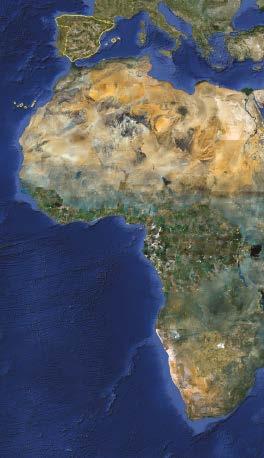

7. Ecuador
8. El Salvador
9. España
10. Guatemala
11. Guinea Ecuatorial
12. Honduras
13. México
14. Nicaragua
15. Panamá
16. Paraguay
17. Perú
18. Puerto Rico
19. República Dominicana
20. Uruguay
21. Venezuela
b. compositora y pianista venezolana
f. cantante y compositor uruguayo
g. escritora chilena
h. futbolista argentino
¿Quién es Carlos Gardel? —Es un cantante de tango y compositor uruguayo.
48. In pairs, share your answers to activities 46 and 47.
—¿Lionel Messi es un futbolista argentino?
—No sé.
—Sí, sí; es un futbolista argentino muy famoso.
49. Find other famous people from history or the present day with the following nationalities. Then, share your findings with the class.
boliviano/a costarricense cubano/a dominicano/a ecuatoguineano/a ecuatoriano/a guatemalteco/a
hondureño/a mexicano/a nicaragüense panameño/a peruano/a puertorriqueño/a salvadoreño/a

PREPÁRATE
50. Underline the adjectives that are similar in English or in any other language that you know. famoso/a
• crítico/a
• talentoso/a
• creativo/a
• activo/a
• productivo/a
optimista
• independiente
• inteligente
• simpático/a
• interesante
• influyente
51. Complete these sentences with the correct adjectives from the list above.
1. Manuel tiene ideas originales: es muy …
2. Carla hace muchas cosas diferentes en un día: es una persona …
3. Amalia tiene una actitud positiva ante la vida: es una chica (girl)
4. Alberto toca el piano fenomenal: es muy …
5. A Camila le gusta vivir sola (alone, by herself): es muy …
52. In pairs, compare your answers to activities 50 and 51.
53. Write three more sentences with the adjectives not used in activity 51. Share them with the class.
PREPÁRATE
54. Check whether you think these statements are true (V) or false (F). Then read the text and verify your answers.
1. En Argentina muchas personas tienen origen italiano.
2. Muchos peruanos son de origen asiático.
3. El español tiene palabras de origen árabe.
4. En América Latina existen más de 500 pueblos originarios (indigenous peoples)
TEXTO LOCUTADO Y MAPEADO

El mundo hispanohablante tiene una larga historia de conquistas1, migraciones e intercambios culturales; por eso la gente, la cultura y la lengua son muy diversas.
Muchos países no tienen estadísticas sobre la población originaria, pero, según UNICEF, en América Latina viven actualmente 522 pueblos indígenas. En los países de habla hispana, una parte importante de la población
tiene antepasados2 africanos o españoles. Hay también muchas personas de origen chino y japonés (como en Perú), judío3, alemán o italiano (como en Argentina).
España tiene también una larga historia de conquistas y encuentros4 entre pueblos ibéricos, celtas, romanos, judíos, germánicos y árabes.
55. Look at the connectors underlined in the text above. What are their equivalents in English?
56. Complete the sentences with the most appropriate connector. Then compare answers with your classmates.
1. Ana es una persona muy inteligente, creativa talentosa.
2. Carlos es de México, vive en España desde 2016.
3. Eva Longoria es actriz y modelo. es activista por los derechos de los hispanos en Estados Unidos.
4. Es un actor muy bueno y colabora con muchas organizaciones sociales, tiene el reconocimiento (recognition) de muchas personas.
5. ¿Tú vives en Buenos Aires en Rosario?
6. Isabel habla francés, español inglés.
GLOSARIO
1 la conquista: conquest
2 el antepasado: ancestor
3 judío/a: Jewish
4 el encuentro: interaction
57. Listen. Which sentences are questions and which are statements? For each item, check the sentence that you hear. How can you tell the difference?
1. J ¿Es de Perú? J Es de Perú.
2. J ¿Viaja mucho? J Viaja mucho.
3. J ¿Dónde vive Julia? J Donde vive Julia.
4. J ¿Eres estudiante? J Eres estudiante.
58. Compare your answers with a classmate.
This section includes Cápsulas de pronunciación, animated explanations about different aspects of pronunciation and intonation.
59. In activity 57 there are two types of questions: Yes/No questions, to which we respond sí or no; and Wh- questions, which require longer answers. Write the questions from activity 57 in the appropriate columns below.
YES/NO QUESTIONS WH- QUESTIONS
60. Listen and repeat the following questions. Then, in pairs, take turns asking and answering them.
• ¿Cómo te llamas?
• ¿Cuál es tu apellido?
• ¿De dónde eres?
¿Cuántos años tienes?
¿Dónde vives?
¿Te gusta el español?

In Spanish, as in many other languages, questions and answers have different intonation.
In wh - questions, the final intonation follows a risingfalling pattern.
In yes/no questions, intonation rises at the end of the sentence.
¿E res de Mé xi co?
61. How do you study vocabulary? What strategies do you use?
Conocer los textos
A mí me gustan los diccionarios visuales, relacionar palabras con imágenes.
62. Look at these strategies for organizing and learning. Then write your own examples.
A. LLUVIA DE IDEAS (BRAINSTORM)
Free association of words related to a theme.
Universidad estudiar biblioteca semestre campus
Words related to a theme, organized by category.
AHORA TÚ: Do your own brainstorm on the topic of Latinoamérica.
This section focuses on different types of written and oral texts, as well as on useful techniques for writing texts. Early chapters present and discuss the written or oral work students will do in English. In later chapters, students learn about different genres, especially in connection with academic work. This section sometimes functions as scaffolding for the final projects Proyecto en grupo and Proyecto individual.
Moda
Diseñador(a)
Escritor(a) Literatura
Profesor(a) Educación
Música
Músico/a, cantante
Político/a
Actor/ Actriz
Cine y teatro
C. JERARQUÍA (HIERARCHY)
Words organized in a specific order.
Países hispanoamericanos de norte a sur México Guatemala Honduras El Salvador Nicaragua Costa Rica Panamá
AHORA TÚ: Create your own list of interesting topics for your Spanish class.
D. COMPLEMENTARIOS U OPUESTOS (COMPLEMENTARY OR OPPOSED)
Words organized by related or opposing meanings.
actor/actriz estudiante/profesor(a)
E. FAMILIA DE PALABRAS (WORD FAMILY)
Words with the same root.
cantante/cantar/canción
AHORA TÚ: Create word pairs with related or opposing meanings.
AHORA TÚ: Create the word family for the verb estudiar
F. COMBINACIONES Y COLOCACIONES LÉXICAS (WORD COMBINATIONS AND COLLOCATIONS)
Groups of words often used together.
director(a) de cine orquesta
G. SONIDO Y ORTOGRAFÍA (SOUND AND SPELLING)
Words organized by sound or spelling.
Palabras con eñe: español baño niños
H. COGNADOS (COGNATES)
AHORA TÚ: Create combinations with the verb ser
AHORA TÚ : Write down words with the letters qu
Words related by derivation, borrowing, or descent in different languages.
arte > art información > information
AHORA TÚ: Write five more examples.
63. Choose words from chapters 1 and 2 and organize them using one of these strategies.
64. Share your examples with the class.
ANTES DE LEER
65. Search online for information about the following artists. Then answer the questions.
Alejandro González Iñárritu Yalitza Aparicio
Alfonso Cuarón Guillermo del Toro
• ¿Quiénes son?
• ¿Qué hacen? ¿De dónde son?
MÉXICO
Mapas culturales
This section highlights products, practices, and perspectives in an organic way. Poetry, short stories, essays, and texts that feature music, art, history, and cinema are introduced from the beginning. A multiliteracies approach to working with cultural texts emphasizes the need to expose students to these cultural expressions, regardless of their language level.

Alejandro, Alfonso y Guillermo son en Hollywood “los tres amigos”, algo muy especial en un ambiente1 considerado hostil.
Del Toro es experto en historias de terror y fantasía; Iñárritu, en drama, y Cuarón, en combinar diferentes géneros. Los tres tienen premios Óscar: Cuarón por Gravity (2014) y por Roma (2018) como mejor película de habla no inglesa; Iñárritu, por Birdman (2015) y The Revenant (2016), y Del Toro, por The Shape of Water (2018).
Orgullosos de2 su origen, pero con una perspectiva global, los tres cuentan historias humanas.
Roma, por ejemplo, cuenta3 la historia de Cleo, la "nana"4 de la familia, interpretada por Yalitza Aparicio, una actriz mexicana de origen mixteco nominada al Óscar a la mejor actriz en 2019. Para la revista Time fue “la mejor actuación de 2018”. Además, fue la primera mujer de origen mixteco que apareció en la portada5 de Vogue (en enero de 2019).
GLOSARIO
1 el ambiente: environment 2 orgulloso/a de: proud of 3 contar: to tell 4 la nana: live-in housekeeper 5 la portada: cover


DESPUÉS DE LEER
66. Write the number of each missing phrase where it belongs in the article on page 52.
1. Y es que saben1 que el cine es universal y que traspasa fronteras y banderas2
2. Este hecho es crucial para la representación de la sociedad mexicana.
3. Los tres tienen en común3 su lugar de origen, su profesión y su talento, pero sus estilos son muy diferentes.
GLOSARIO
4. Pero también son muy conocidas4 sus películas en español, como Amores perros (Iñárritu, 2000), Y tu mamá también (Cuarón, 2001) y El laberinto del fauno (Del Toro, 2006).
67. In pairs, compare your answers to activities 65 and 66.
In these activities, students reflect critically on what they have read, their own culture, and other cultures.
68. Why do you think it is important for Yalitza Aparicio to be on the cover of Vogue magazine? Share your opinion with your classmates.
1 saber: to know 2 la bandera: flag
3 tener en común: to have in common
4 conocido/a: famous, well-known
ANTES DE LEER
69. Look at these works of art and write down in English what you think they have in common. Compare your ideas in small groups.
El arte es una forma de conocer la realidad y de construir2 la propia identidad, y en todas sus formas (pintura, escultura, música, cine, fotografía, etc.) es también un reflejo3 del artista. Por eso, los retratos y los autorretratos son fundamentales en la obra de muchos creadores. Aquí presentamos tres ejemplos del mundo hispanohablante.
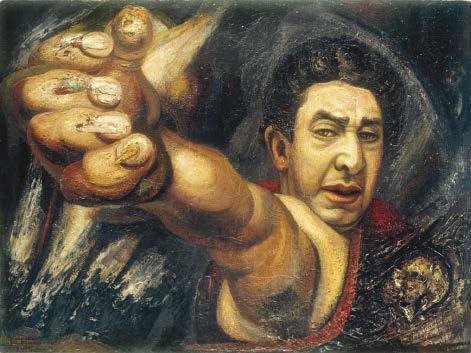
Autorretrato, David Alfaro Siqueiros, (México, 1896-1974)
Su obra humanista, de carácter político, refleja el dolor y la miseria, y denuncia la violencia del siglo XX.
GLOSARIO
1 el autorretrato: self-portrait
2 construir: to build
3 el reflejo: the reflection
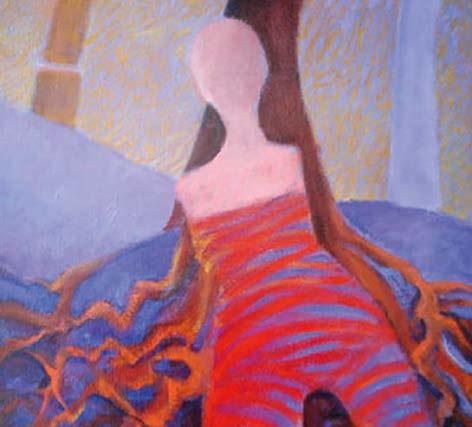
El árbol y yo, Coqui Calderón (Panamá, 1937)
Su arte estudia la relación íntima que existe entre la mujer y la naturaleza.
© David Alfaro Siqueiros, VEGAP, Barcelona, 2020 © Cortesía de Coqui Calderón

Nahui Olín, Dr. Atl (Gerardo Murillo), (México, 1875-1964) Vulcanólogo y filósofo, en su arte estudia los colores de la naturaleza.
Colección Andrés Blaisten Dr. (Gerardo Murillo) ATL Nahui Olin, Ca. 1922. Atl colors / fresco, 100 × 100
70. Read the following ideas. Then, look back at the introductory text and underline the relevant words or sentences that express these ideas. Share your answers with a partner.
• Con el arte podemos conocer e interpretar el mundo.
• Los retratos y los autorretratos muestran la personalidad del/de la artista.
71. Read the information under each painting and research online to answer the questions.
• ¿De dónde son los artistas?
• ¿Qué caracteriza su arte?
• Busca otras obras de estos artistas. ¿Te gustan o no? ¿Por qué?
72. Self-portraits and selfies are ways of presenting oneself to the world, but can a selfie be a work of art? Discuss in groups.
73. What words come to your mind when you look at these pictures? Write two for each of them, in English. Then look for their translation in Spanish, share them with the class, and make a map of all your associations. Which words are positive? Which are negative?
Proyectos
These are the concluding activities in each chapter. Students first work collaboratively and then individually to create their own project.
We are going to research and present some basic information about the most famous Latinos in the United States.
Proyecto en grupo: The group presentations give students the opportunity to think critically about the chapter themes. Students brainstorm, negotiate, create, and present a final piece of work to the class.
A. In small groups, identify the people in these pictures and look up their personal information online: name, origin, age, occupation, personality.
Chang‑Diaz
¿Quiénes son los latinos más influyentes de Estados Unidos?
Los latinos son la minoría más numerosa en Estados Unidos. Muchas figuras de la comunidad latina destacan en el mundo de la política, los negocios, la ciencia, la literatura, el cine, la moda, el arte, la música, los deportes, el periodismo y los medios de comunicación.
¿Cuál es tu top 10 entre los latinos más influyentes en Estados Unidos? Aquí tenemos algunos ejemplos.
Proyecto individual: The individual project builds on the topics presented in the group presentation, and while the group presentations stress oral production, the individual presentations invite students to produce a written text such as a blog post, essay, article, script for an audiovisual product, etc.

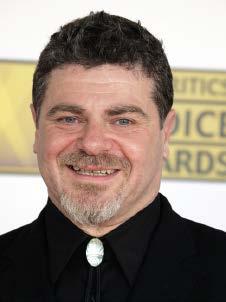


B. Read the text and search online for more famous Latinos in these or other professions. Then make a list of the ten that you find most influential. Order them by importance, where number one is the most influential.
• mujer/hombre de negocios científico/a escritor(a)
• director(a) de cine
• actor/actriz diseñador(a) de moda artista
• músico/a
• deportista periodista político/a
C. Present your list to the rest of the class and share basic information about the top three figures on your list.
En el número 1 tenemos a Para nosotros/as es importante porque
NOMBRE Y APELLIDO:
¿Cómo se llama?
¿Cuál es su apellido?
ORIGEN, NACIONALIDAD: ¿De dónde es exactamente?
EDAD:
¿Cuántos años tiene?
PROFESIÓN, ACTIVIDAD:
¿Qué hace? ¿Qué es?
PERSONALIDAD: ¿Cómo es?
OTRA INFORMACIÓN RELEVANTE: Trabaja en... Vive en... Habla...
You are going to design an infographic about the five people you think are the most influential in the Spanish-speaking world.
A. Choose one influential Hispanic or Latino in five of the following fields. Then put them in order of descending importance from 1 to 5.
la política los negocios la ciencia la literatura el cine la moda el arte la música los deportes el periodismo
B. For each person, create a personal information card like the one in the group project, and add a photo.
C. Organize the important information in a first draft.
D. Think of a title for your infographic and prepare your final version.
ESTRATEGIAS
Review the vocabulary and use the dictionary. No automatic translators. Also refer to this chapter's Gramática & Vocabulario

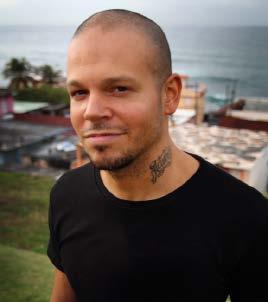



Every project has been designed to develop specific skills and cover a wide range of formats. To complete them, students must research, create, and prepare presentations about interdisciplinary subjects and engaging topics that are culturally relevant and often related to their community.
1. THE PRESENT TENSE
PRESENT INDICATIVE (II)
u Conjugation of regular verbs: ‑ar, ‑er, ‑ir
In Chapter 1 you learned the present tense forms of regular -ar, -er and -ir verbs, as well as the present tense of the irregular verb ser
-AR: ESTUDIAR
stem: estudi‑
-ER: LEER stem: le‑
-IR: ESCRIBIR stem: escrib‑
yo estudio leo escribo tú/vos estudias/ás lees/és escribes/ís él, ella, usted estudia lee escribe nosotros/-as estudiamos leemos escribimos vosotros/-as estudiáis leéis escribís ellos, ellas, ustedes estudian leen escriben
u The verbs ser, ir, tener and hacer

Gramática & Vocabulario
This section contains linguistic information and explanations with meaningful examples pertaining to key chapter themes. This section is enhanced by images, graphics and pictures to supplement descriptions, and definitions that otherwise could be dry and intimidating.
Here are three more irregular verbs in the present tense. Ser’s forms are also included in the chart for comparison.
Structures
SER (to be) IR (to go) TENER (to have) HACER (to do, to make)
Explanations and tables that describe morphology, as well as syntactic structures, are presented here. Some concepts are intentionally explained with the use of graphics to facilitate understanding.
yo soy voy tengo hago tú eres vas tienes haces él, ella, usted es va tiene hace nosotros, nosotras somos vamos tenemos hacemos vosotros, vosotras sois vais tenéis hacéis ellos, ellas, ustedes son van tienen hacen
Soy Iris y tengo 16 años. Voy a la escuela de mi barrio y hago mucho deporte. (I'm Iris and I'm 16 years old. I go to my neighborhood school and I play a lot of sports.)
2. SUBJECT PRONOUNS
u Vosotros or ustedes?
SUBJECT PRONOUNS (I)
As you learned in Chapter 1, in most areas of Spain, the vosotros form is used to address a group of two or more people informally. Ustedes is used to address two or more people formally. Vosotros and vosotras are not used in Latin American Spanish. There, ustedes is used to address all groups of two or more people, regardless of whether the context is familiar or formal.
España
Juan y Ana María, ¿vosotros sois mexicanos?
(Juan and Ana María, are you Mexican?)
Latinoamérica
Juan y Ana María, ¿ustedes son mexicanos?
(Juan and Ana María, are you Mexican?)
3. INDEFINITE ARTICLES
You learned the definite articles el, la, los and las (the) in Chapter 1. The Spanish indefinite articles un, una, unos, and unas are equivalent to a, an, and some in English. They also change to show number and gender.
singular plural
masculine un un libro (a book) unos unos libros (some books)
feminine una una casa (a house) unas unas casas (some houses)
ATENCIÓN
Feminine nouns that begin with a or ha and are stressed on that syllable take the masculine article. This is true for both definite and indefinite articles : un aula (classroom) , un ala (wing) / el aula, el ala
Adjectives are words that describe nouns (words that represent people, places, things or concepts: la mujer, la ciudad, el libro, la economía). They change to match the gender and number of the noun they describe. Like nouns, adjectives have masculine and feminine forms, and singular and plural forms. Some adjectives you have learned in this chapter include famoso, creativo, simpático, activo, inteligente, and optimista
Adjective endings usually change according to the gender and number of the nouns. However, some adjectives have two endings, one that agrees with a masculine noun (such as the adjective simpático) and another that agrees with a feminine noun (simpática). Other adjectives have just one ending, no matter the gender of the noun (such as inteligente or optimista).
ending masculine singular feminine singular
-o/a simpático simpática
-or(a) trabajador trabajadora
-e elegante elegante -ista feminista feminista
-n
-z
joven especial regular capaz
joven especial regular capaz
To form the plural of adjectives that end in a vowel, add an –s

To form the plural of adjectives that end in a consonant (such as -l, -n, -r, -s or -z), add –es
ending masculine singular feminine singular plural (-s)
-o/a simpático simpática simpáticos simpáticas
-e elegante elegante elegantes -ista feminista feminista feministas -or(a) trabajador trabajadora trabajadores trabajadoras
-n -l -r
-z
joven especial regular capaz
joven especial regular capaz
jóvenes especiales regulares capaces
ATENCIÓN
Just like nouns that end in z , adjectives that end in z change the z to c in their plural form: feliz › felices capaz › capaces
u Placement
In Spanish, unlike English, adjectives usually follow the noun.

una persona comprometida (a commited person)
5. QUESTION WORDS (I)

una profesora capaz (a capable professor)

un estudiante joven (a young student)
Here are some words you can use to ask questions in Spanish. Notice that they all have an accent.
¿Quién es Gael García? (Who is Gael García?)
¿Cómo es Valeria? (What is Valeria like?)
¿Cuántos años tienes? (How old are you? -literally, How many years do you have?)
¿Dónde vives? (Where do you live?)
¿Adónde vas? (Where are you going?)
¿De dónde eres? (Where are you from?)
¿Qué estudias? (What are you studying?)
y: links words or phrases at the same level
Martín y Rosa estudian y trabajan. (Martín and Rosa study and work.)
o: is used to show options
¿Estudias o trabajas? (Are you studying or working?)
también: adds information
Se habla español en España, en América Latina y también en Estados Unidos. (Spanish is spoken in Spain, in Latin America, and also in the United States.)
pero: introduces a contrasting idea
Entiendo español, pero no lo hablo muy bien. (I understand Spanish, but I don't speak it very well.)
por eso: introduces a consequence
Mi mejor amigo es de Perú; por eso estudio español.
(My best friend is from Perú; that's why I am studying Spanish.)
In Spanish, an inverted question mark and exclamation point is also used at the beginning of the question or exclamation (¿?, ¡!).
¿Cuál es la capital de Argentina? (What is the capital of Argentina?)
¡Muchas gracias! (Many thanks! / Thank you very much!)
ATENCIÓN
Spanish uses an inverted question mark at the beginning of a question in addition to a regular one at the end.
ATENCIÓN
Y becomes e when the following word begins with the sound [ i ].
ATENCIÓN
In informal texts in Spanish (especially in digital formats and handwritten notes), the opening inverted question mark or exclamation point is often omitted. In formal texts, however, it is very important to use them.
¿Quién + ser ?
¿Quién es el hombre/la mujer de la foto? (Who is the man/woman in the photo?)
¿Quiénes son los hombres/las mujeres de la foto? (Who are the men/women in the photo?)
Es una pintora/cantante/fotógrafa… (It's a painter/singer/photographer
Vive en Santa Fe… (She/He lives in Santa Fe.)
Hace música/fotografías/documentales… (He/She does music/photography/documentaries.)
Escribe poesía/libros… (She/he writes poetry/books )
En sus libros/canciones/obras… habla sobre la vida (In his/her books/songs/works la sociedad. (society)
Me gusta porque es divertido. (I like it because it's fun.)
4. EXPRESSING LIKES AND DISLIKES
(No) me gusta + singular noun/infinitive
Me gusta aprender lenguas. (I like to learn languages.)
No me gusta la música clásica. (I don't like classical music.)
(No) me gustan + plural nouns
Me gustan los cuadros de Frida Kahlo (I like Frida Kahlo's paintings.)
No me gustan las matemáticas. (I don't like math.)
(No) te gusta + singular noun/infinitive
¿Te gusta aprender lenguas? (Do you like to learn languages?)
¿No te gusta la música clásica? (Don't you like classical music?)
(No) te gustan + plural nouns
¿Te gustan los cuadros de Frida Kahlo? (Do you like Frida Kahlo's paintings?)
5. EXPRESSSING LACK OF KNOWLEDGE
No sé + question word
No sé quién es. (I don't know who that is.)
No sé + infinitive
No sé hablar francés. (I don't know how to speak French.)
6. PERSONAL INFORMATION
¿Cómo te llamas? (What's your name?)

¿No te gusta la música clásica? Don't you like classical music?
Me gusta arte.
Me gusta el arte. (I like art.)
Me gusta tu casa. (I like your house.)
Me gusta esta canción. (I like this song.)
¿Cuál es tu apellido?/¿Cómo te apellidas? (What's your last name?)
¿De dónde eres? (Where are you from?)
¿Qué lenguas hablas? (What languages do you speak?)
¿Qué estudias? (What are you studying?)
¿Dónde vives? (Where do you live?)
¿Cuántos años tienes? (How old are you?)
¿Qué haces? (What do you do? / What are you doing?)
1. PROFESIONES (PROFESSIONS)

activista (an activist)

un(a) cantautor(a) (a singer-songwriter)

un(a) deportista (an athlete)

un(a) escritor(a) (a writer)

un(a) ingeniero/a (an engineer)

un(a) pintor(a) (a painter)

un actor (an actor) una actriz (an actress)

un(a) científico/a (a scientist)

un(a) director(a) de cine (a film director)

un(a) estudiante (a student)

un(a) músico/a (a musician)

un(a) político/a (a politician)
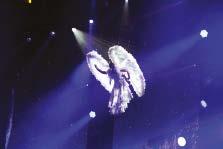
artista (an artist)

un(a) compositor(a) (a composer)
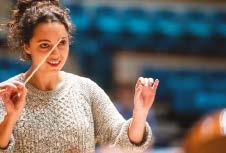
un(a) director(a) de orquesta (a conductor)

un(a) futbolista (a soccer player)

un(a) periodista (a journalist)

un(a) profesor(a) (a teacher)

un(a) cantante (a singer)

un(a) chef (a chef)

un(a) diseñador(a) (a designer)

un(a) hombre/mujer de negocios (a businessman/businesswoman)
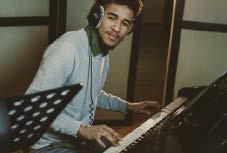
un(a) pianista (a piano player)

un(a) programador(a) (a programmer)
argentino/a (Argentinian) boliviano/a (Bolivian) chileno/a (Chilean) colombiano/a (Colombian)
costarricense (Costa Rican) cubano/a (Cuban)
dominicano/a (Dominican) ecuatoguineano/a (Ecuatoguinean)
ecuatoriano/a (Ecuadorian) español(a) (Spanish) guatemalteco/a (Guatemalan) hondureño/a (Honduran)
mexicano/a (Mexican) nicaragüense (Nicaraguan) panameño/a (Panamanian) paraguayo/a (Paraguayan)
peruano/a (Peruvian) puertorriqueño/a (Puerto Rican)
salvadoreño/a (Salvadoran) uruguayo/a (Uruguayan)
venezolano/a (Venezuelan)
estadounidense (American) canadiense (Canadian) mexicano/a (Mexican)
uno/un/una

simpático/a (nice) independiente (independent) inteligente (intelligent/smart)
interesante (interesting)
influyente (influential) optimista (optimistic)
productivo/a (productive)
crítico/a (critical, judgmental)
talentoso/a (talented) activo/a (active) famoso/a (famous) creativo/a (creative)
INFORMACIÓN PERSONAL (PERSONAL INFORMATION)
estudiar Ingeniería idiomas (to study › engineering › languages) en una universidad en España (to study › at a college ⁄ university › in Spain)
hablar español lenguas extranjeras (to speak › Spanish › foreign languages) con compañeros/as con amigos/as (to speak › with classmates › with friends)
ser estudiante (to be a student) mexicano/a (to be Mexican) simpático/a (to be nice) de Bogotá (to be from Bogotá) un(a) artista crítico/a un(a) cantante mexicano/a (to be an artist who is a social critic › a Mexican singer) de origen asiático (to be of Asian descent)
tener 23 años (to be 23 years old) amigos/as (to have friends)
trabajar en una universidad (to work at/for a college › university) en México en una ONG (to work in Mexico › for an NGO) en la biblioteca en un restaurante (to work at the library › at a restaurant)
vivir en Santiago en el extranjero (to live in Santiago › abroad) con los padres solo/a (to live with (your) parents › alone) en el campus (to live on campus)
Send your students on a literary journey through cities of Spanish-speaking countries with our graded readers. Specifically designed for students in the U.S., this series also serves as a cultural complement to MAPAS.

• Tailored Learning: Engaging content for effective Spanish language acquisition.
• Proficiency Range: Stories graded from Novice to Intermediate for step-by-step language improvement.
• Vocabulary Reinforcement: Exercises to build a strong foundation in Spanish expressions.
• Visual Vocabulary: Dictionaries with relatable imagery for enhanced comprehension.
• Cultural Immersion: Insights into traditions, cuisine, and history.
• Interactive Learning: Diverse language activities to keep you engaged.
• Accessible Glossaries: English glossaries for quick understanding of new terms.
• Authentic Audio: MP3s with Latin American accents for listening practice.
24 horas en Buenos Aires

24 horas en Ciudad de México

24 horas en Bogotá Novice High Intermediate Low–Mid
24 horas en Barcelona

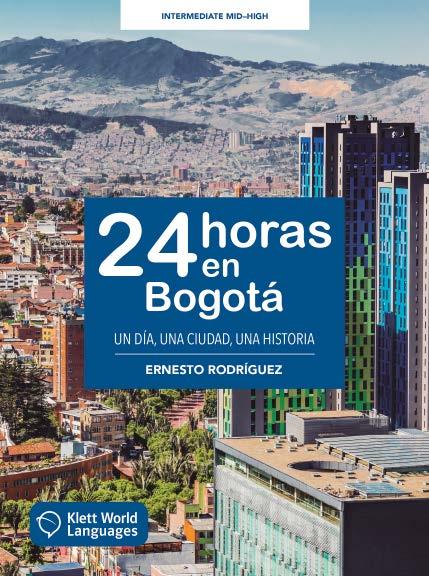
Read the full case study at www.klettwl.com/case-studies
MAPAS opened doors to 21stcentury resources, authentic videos, interactive exercises, online discussions, and multimedia materials that help with diverse learning styles and interests. Also allowed students to explore various accents, cultural differences, and authentic language use, preparing students for real-world communication.
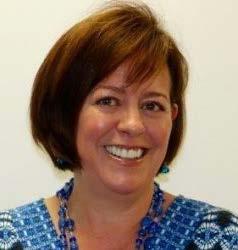
Magnolia Inmon was born and raised in Madrid, Spain, where she completed her undergraduate studies before moving to the United States. She received her first Spanish teaching certification from the Atlanta Department of Education and taught all levels of Spanish in private and public schools. After moving to Virginia she obtained a MLA Certification in Spanish from George Mason University and a Spanish Teaching Certification from ACTFL. In addition she holds a Masters in Accounting and Finances by CEREM, Madrid. She is also a member of ACTFL, AATSP, AAUSC, and Instituto Cervantes.
Magnolia has been using MAPAS daily in her classroom for over a year.
Would you like to request a free sample?
Please scan the code!
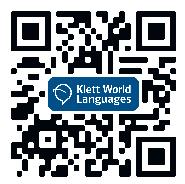

All images and texts are protected and licensed for MAPAS.
© 2025 by Difusión, S.L.
Would you like to learn more about our K-12 catalog? Please scan the code!

Instagram: klettwl
Facebook: KlettWL
YouTube: KlettWorldLanguages
EAN: 843601673-685-5
LinkedIn: klettwl
Spotify: Klett World Languages
Pinterest: klettwl